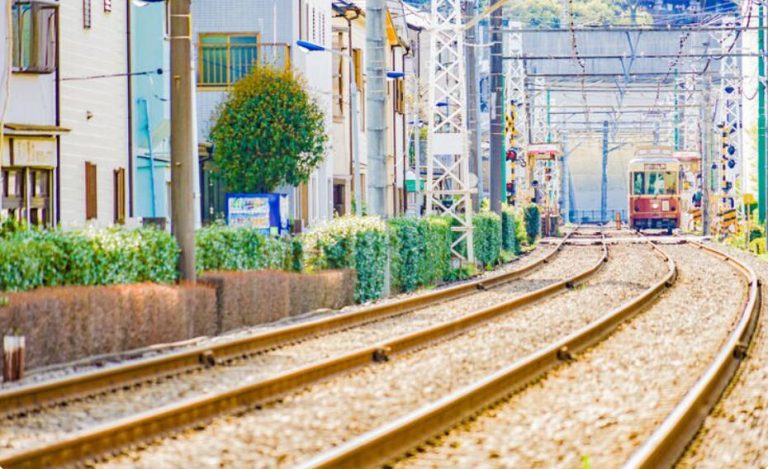Keeping the railway in tip-top shape can be tough — greasy walkways, heavy machinery, and harsh weather tend to place railway workers in hazardous conditions. Selecting the suitable walking board goes beyond convenience; it’s safety and long-term dependability. Rubber walking boards are increasingly gaining favor in railway projects due to their longevity, anti-slip properties, and flexibility to withstand harsh conditions. This guide will assist you in recognizing how to determine which rubber walking boards to use and why SAFE products are a reliable option everywhere across the globe.

Why Rubber Walking Boards Matter
Enhancing Railway Safety
Rubber walkboards are a very important component of rail safety. They create safe and stable pathways for maintenance personnel and emergency service personnel, reducing falls and slips. Railway safety is of prime importance, and walkboards are an important component in rendering it possible for workers to reach the tracks safely and effectively.
Issues common in railway walkways
Railway walkways are also subject to numerous challenges, such as exposure to extreme weather conditions, high foot traffic, and having to carry heavy loads. These may not hold up over time using traditional materials and are hence susceptible to decay and enhanced safety hazards. This necessitates the employment of long-lasting materials such as rubber that can improve their ability to cope with such challenges.
Key Factors to Consider
Material durability
Material strength comes into play, especially during rubber walking board selection. The board will be in use continuously and therefore should not exhibit excessive wear or damage. Our products must undergo rigorous testing to withstand a variety of conditions. It has advanced equipment and a complete quality management system.
Weather and environmental resistance
Rubber walk boards should provide resistance to environmental factors such as UV rays, humidity, and temperature. SAFE’s boards are designed to provide enhanced resistance to these factors while facilitating extended service despite extreme weather conditions.
Load-bearing capacity
Rail walkways must provide space for maintenance equipment and the weight. Our rubber boards have high load capacities designed to facilitate such demands with safety.
Anti-slip surface design
An anti-slip surface to avoid accidents on the railway walkways. SAFE rubber walking boards incorporate specialized surface characteristics that function better in traction even when it’s wet or icy.

Installation and Compatibility
Installation following standard protocols
Rubber walking board installation entails following standard protocols to guarantee stability and safety. SAFE offers precise installation procedures following industry standards, which makes it easy for railway operators to carry out the installation process.
Compatibility with other rail systems
Our rubber walking boards can fit all rail systems in the world. Whether a metro line or a high-speed line, our product can easily fit into existing infrastructure. We supplied 130,000 sets of high-performance heavy-haul railway fastening systems to Shaanxi in 2023.
Tips on maintenance and replacement
Regular maintenance prolongs the life of rubber walking boards. SAFE recommends regular checks and cleaning protocols. Furthermore, upon replacement when worn or damaged, our service provides for a minimized disruption.
Why Use SAFE Rubber Walking Boards
Choices of customization from SAFE
SAFE is aware that every project comes with different requirements. We provide customization of our rubber walking boards based on unique requirements in terms of size, thickness, and surface texture. We can develop, produce, and customize a range of rubber products to specifications from customers.
Expert advice and support
Our professionals at SAFE offer professional advice during the selection process. From consultation to after-installation support, we provide our clients with maximum advice.
Established performance on site
SAFE products have been proven effective on a global range of projects.
In 2025, through our precision manufacturing and end-to-end quality assurance system. Our commitment to quality ensures our rubber walking boards perform consistently under different conditions.
Making an Informed Decision
Comparing different types of boards
When deciding between walking board types—rubber and others—consider such factors as durability, cost, and maintenance needs. Rubber is often a compromise of performance advantages well worth the cost.
When to select custom options
Custom options are best when standard products cannot deliver what’s needed for particular projects or conditions. SAFE’s ability to customize enables us to produce products that are specifically designed to fit out-of-the-ordinary uses.
Budget vs. long-term value
While initial expense is an excellent consideration in any project budget, creating a rubber products factory in Shanxi, investing in quality materials such as those from SAFE provides long-term value in the form of lower maintenance costs and improved safety.

Conclusion
The proper rubber walking board selection ensures safe, effective, and reliable rail maintenance. Weather resistance, load capacity, anti-slip construction, and material life determinants are your choice guidelines. SAFE’s superior-quality, customized rubber walking boards, expert recommendations, and established performance make them a reliable option for rail ventures globally.
Ready to elevate your resource safety for railway maintenance? Call SAFE today to speak with a trained professional about expert advice or custom rubber walking board solutions.
FAQ
Q: What are the advantages of rubber walking boards over traditional materials?
A: A rubber walking board is more durable, weather-resistant, and slip-resistant compared to conventional materials such as metal or wood. It resists heavy foot traffic, temperature, and humidity and offers a safe platform for maintenance staff, limiting slipping and accidents.
Q: What is the process of choosing a good rubber walking board for a railway project?
A: When choosing a rubber walking board, consider material strength, load rating, environmental durability, anti-slip surface design, and compatibility with your rail system. Special applications will be aided by manufacturers like SAFE with custom solutions.
Q: Are rubber walking boards general-purpose for any railway system?
A: Yes. Rubber walking boards are constructed using high-grade materials that can be used on various railway systems, including high-speed rail, metro rail, and heavy-haul freight railways. They can be installed in existing structures with ease and yet remain in compliance with safety regulations.
Q: What is rubber walking board maintenance to prolong performance?
A: Daily maintenance is conducted, including inspection of damage or wear, and replacement of worn hardware or parts as needed. Unwavering adherence to the manufacturer’s maintenance recommendations ensures boards are functional and safe in the long run.
Q: In what instances should one order customized rubber walking boards?
A: Specially ordered rubber walking boards are suggested in cases where standard sizes or forms cannot suit your project’s unique requirements, e.g., when there are uncommon track designs, extreme weather conditions, or higher loads. Custom solutions provide safety, durability, and the best performance.




